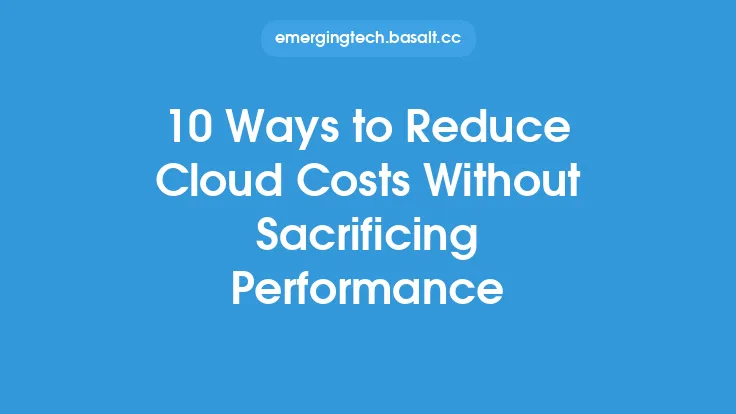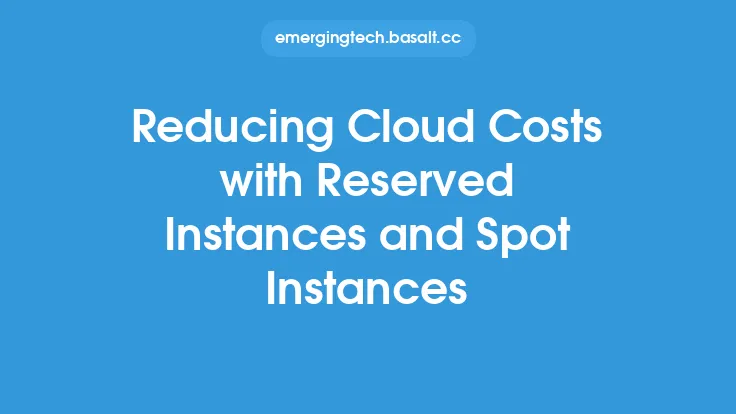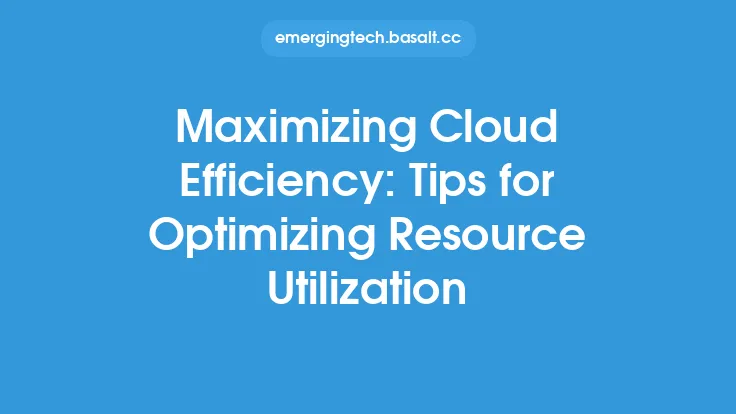Optimizing cloud costs is a critical aspect of cloud computing, as it enables businesses to maximize their return on investment (ROI) while minimizing unnecessary expenses. One effective way to achieve this is by leveraging automated scaling and scheduling, which allows businesses to dynamically adjust their cloud resources to match changing workload demands. In this article, we will delve into the world of automated scaling and scheduling, exploring how these techniques can help businesses optimize their cloud costs and improve overall efficiency.
Introduction to Automated Scaling
Automated scaling, also known as autoscaling, is a cloud computing feature that enables businesses to automatically adjust the number of resources (such as virtual machines, containers, or serverless functions) based on changing workload demands. This is typically achieved through a combination of monitoring, analytics, and machine learning algorithms that detect changes in workload patterns and adjust resource allocations accordingly. By automating the scaling process, businesses can ensure that they have the right amount of resources to handle changing workloads, without the need for manual intervention.
Benefits of Automated Scaling
Automated scaling offers several benefits, including improved resource utilization, reduced costs, and enhanced application performance. By dynamically adjusting resource allocations, businesses can ensure that they are not over-provisioning or under-provisioning resources, which can lead to wasted costs or poor application performance. Additionally, automated scaling enables businesses to respond quickly to changing workload demands, which can help improve application availability and reduce the risk of downtime.
Scheduling in Cloud Computing
Scheduling is another critical aspect of cloud cost optimization, as it enables businesses to plan and manage their resource utilization in advance. Scheduling involves allocating resources to specific tasks or workloads at specific times, which can help businesses optimize their resource utilization and reduce costs. For example, a business may schedule a batch processing job to run during off-peak hours, when resource costs are lower. By scheduling resource utilization in advance, businesses can ensure that they are using their resources efficiently and effectively.
Automated Scheduling Techniques
There are several automated scheduling techniques that businesses can use to optimize their cloud costs. One popular technique is cron scheduling, which involves scheduling tasks to run at specific times or intervals using a cron expression. Another technique is queue-based scheduling, which involves scheduling tasks to run based on their priority and availability of resources. Additionally, businesses can use machine learning algorithms to predict workload patterns and schedule resource utilization accordingly.
Integrating Automated Scaling and Scheduling
Integrating automated scaling and scheduling is critical to optimizing cloud costs. By combining these two techniques, businesses can create a dynamic resource allocation system that adjusts to changing workload demands in real-time. For example, a business may use automated scaling to adjust the number of virtual machines based on changing workload demands, and then use scheduling to allocate those resources to specific tasks or workloads. By integrating automated scaling and scheduling, businesses can ensure that they are using their resources efficiently and effectively, while minimizing costs and improving application performance.
Best Practices for Implementing Automated Scaling and Scheduling
To get the most out of automated scaling and scheduling, businesses should follow several best practices. First, they should monitor their workload patterns and resource utilization closely, to identify opportunities for optimization. Second, they should implement automated scaling and scheduling techniques that are tailored to their specific workload and resource utilization patterns. Third, they should test and validate their automated scaling and scheduling configurations to ensure that they are working as expected. Finally, they should continuously monitor and refine their automated scaling and scheduling configurations to ensure that they are optimizing their cloud costs and improving application performance.
Technical Considerations
From a technical perspective, implementing automated scaling and scheduling requires a deep understanding of cloud computing architecture and resource allocation. Businesses should consider factors such as resource utilization patterns, workload demand, and application performance requirements when designing their automated scaling and scheduling configurations. Additionally, they should consider using cloud-native services such as AWS Auto Scaling, Azure Autoscale, or Google Cloud Autoscaling, which provide pre-built automated scaling and scheduling capabilities. By leveraging these services, businesses can simplify the process of implementing automated scaling and scheduling, and focus on optimizing their cloud costs and improving application performance.
Conclusion
In conclusion, automated scaling and scheduling are powerful techniques for optimizing cloud costs and improving application performance. By dynamically adjusting resource allocations and scheduling resource utilization in advance, businesses can ensure that they are using their resources efficiently and effectively, while minimizing costs and improving application availability. By following best practices and considering technical factors, businesses can implement automated scaling and scheduling configurations that are tailored to their specific workload and resource utilization patterns. As cloud computing continues to evolve, automated scaling and scheduling will play an increasingly important role in helping businesses optimize their cloud costs and achieve their digital transformation goals.





